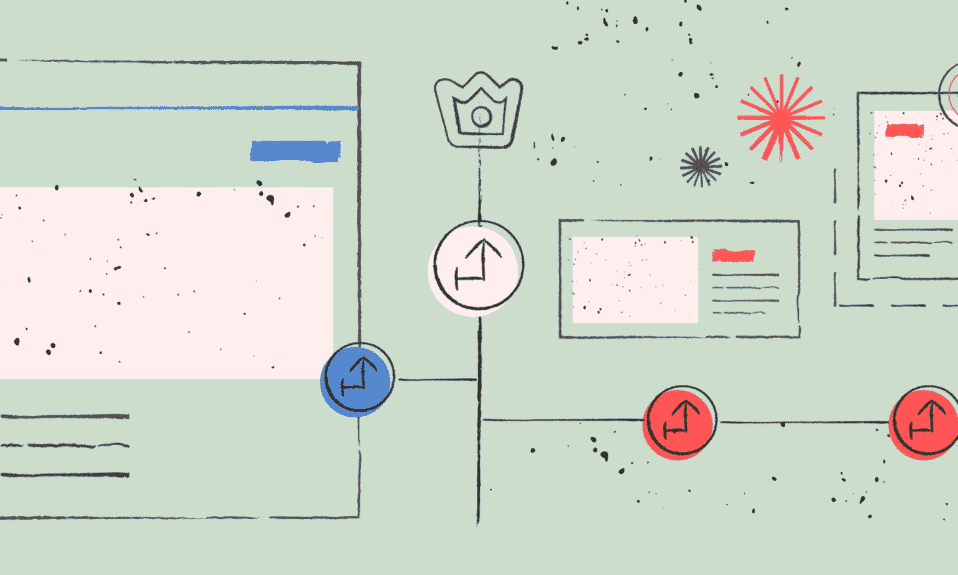“I actually think [writing AI Evals] is going to be one of the core skills for PMs.”
— Kevin Weil (CPO at OpenAI)
Introduction to AI Evals
Foreword
A glossy demo often looks impressive. A chatbot answers flawlessly, a model generates a clean summary, or an AI-assisted assistant flags a few records correctly. Yet, in the enterprise, success depends on thousands of daily interactions, regulatory scrutiny, and the ability to reduce costs and risks at scale. Many AI initiatives stumble at this stage.
Unlike traditional software, AI models don’t follow deterministic rules. The same input can produce different outputs depending on context, prompt phrasing, or model state. For a product manager, this introduces a fundamental challenge. How can you ensure your AI feature is reliable enough to launch, safe enough to scale, and valuable enough to prioritize?
AI evaluations — or AI evals — address this challenge.
AI evals provide structured ways to test how models perform on tasks that matter to the business. They measure more than accuracy in a vacuum. They link model behavior to measurable outcomes. In other words, evals translate abstract model performance into practical impact.
TLDR for AI product managers
For product managers, AI evals serve the same purpose as market validation or A/B testing — they provide evidence that the product not only works but also drives the intended results. They are the guardrails that keep you from shipping risk to your customers and your brand. They are also the compass that tells you which features are worth investing in and which should wait until the technology matures.
In short, AI evals are not a technical luxury; they are a product leadership necessity. They allow PMs to move beyond AI hype and anchor decisions in measurable impact. Over the course of this playbook, we’ll explore how to design, run, and use AI evals as a core part of product management — so that your AI features don’t just dazzle in demos, but deliver in the enterprise trenches.
Brief History of AI Evals
AI evaluations, commonly called AI evals, have evolved alongside AI development itself. Initially, the concept of evaluating machine intelligence emerged with Alan Turing. In 1950, he proposed the Turing Test, which measured AI based on human-like behavior. This early idea inspired subsequent approaches to assess AI capabilities in practical settings.
Following Turing’s work, academic benchmarks such as ImageNet, GLUE, and MMLU emerged. These benchmarks measured knowledge, reasoning, and language understanding. They provided early signals about model strength; however, they did not fully capture enterprise requirements. As a result, practitioners realized the need for more contextualized evaluation methods.
Consequently, as AI moved into products, task-specific evaluations became essential. Enterprises needed tests that reflected real-world workflows rather than abstract benchmarks. This necessity led to the creation of custom evaluation frameworks, focusing on product performance, safety, fairness, and reliability. In turn, companies began building evaluation suites tailored to their applications, making evaluation a product-critical discipline.
Moreover, in recent years, structured tooling has emerged. Platforms like OpenAI Evals enable automated and human-in-the-loop testing. They help teams run consistent and reproducible tests across multiple scenarios. Additionally, independent benchmarks such as HELM and MLCommons’ AILuminate introduced multi-dimensional metrics for robustness, alignment, and safety.
Today, AI evals combine capability benchmarks, product-focused tests, and safety measures. Therefore, they provide PMs actionable insights into both risk and value. Overall, the shift from generic benchmarks to product-specific evaluations reflects the maturation of AI as an enterprise technology. Ultimately, this evolution demonstrates that AI cannot be deployed reliably without systematic evaluation.
What Are AI Evals?
AI evaluations, or AI evals, are structured processes to measure AI model behavior across specific tasks. At their core, they assess whether a model performs as expected in a controlled and repeatable manner. Unlike traditional software testing, AI evals must account for probabilistic outputs, context sensitivity, and multi-dimensional criteria such as accuracy, robustness, fairness, and alignment.
Technically, AI evals rely on a combination of automated metrics and human-in-the-loop assessments. Automated metrics can include precision, recall, BLEU scores, ROUGE, or custom task-specific measures. Simultaneously, human evaluators provide qualitative judgments on output relevance, correctness, safety, and usability. Together, these approaches ensure that evaluations capture both measurable performance and nuanced human interpretation.
Furthermore, AI evals are not one-size-fits-all. They require careful construction of representative datasets, edge-case scenarios, and adversarial tests. By simulating real-world usage, these evaluations identify potential failure modes before deployment. In addition, modern AI eval frameworks, such as OpenAI Evals, introduce modular, reusable evaluation components that allow teams to scale testing across multiple models and tasks efficiently.
Transitioning to a simplified perspective, AI evals are essentially quality checks for AI systems. They determine if an AI behaves correctly, safely, and effectively in the situations it will face. Think of them as a combination of automated testing, like in software, and expert review, ensuring AI decisions meet real-world expectations.
In practice, PMs leverage AI evals to set clear benchmarks, define success criteria, and prioritize improvements. Consequently, evaluations not only guide model development but also inform product decisions, risk mitigation, and strategic roadmaps. In essence, AI evals transform abstract AI performance into actionable insights, bridging the gap between technical capability and enterprise value.
The Three Core Eval Types in Detail
Understanding the distinct types of AI evaluations is paramount for product managers aiming to deploy high-quality AI systems. The three primary categories are Capability Evals, Safety Evals, and Alignment Evals. Each serves a specific purpose and collectively provides a holistic assessment of model performance and enterprise readiness.
Capability Evaluations
Capability evaluations assess a model’s technical proficiency in performing specific tasks. These tests measure metrics such as accuracy, precision, recall, F1 score, and task-specific benchmarks like BLEU for translation or ROUGE for summarization. For PMs, capability evals reveal the model’s strengths and weaknesses in executing functional requirements. They identify whether a model can handle both typical and edge-case scenarios, ensuring operational reliability. Additionally, these evaluations help in comparing model variants, guiding resource allocation for fine-tuning or scaling.
Moreover, capability evaluations extend beyond raw performance metrics. They often incorporate scenario-based testing, which simulates real-world inputs to uncover potential failure modes. This approach enables PMs to anticipate challenges before production deployment, mitigating the risk of unexpected behavior. Consequently, capability evals provide a quantitative foundation for decision-making and prioritization, making them indispensable in enterprise AI product strategy.
Safety Evaluations
Safety evaluations focus on mitigating harm, bias, or undesirable outputs. They measure a model’s susceptibility to adversarial attacks, toxic language generation, misinformation, and biased decisions. PMs leverage these evaluations to ensure compliance with ethical standards and regulatory mandates. For instance, in financial services, safety evals verify that credit-risk models do not inadvertently discriminate against protected demographics. In healthcare, they ensure diagnostic AI avoids unsafe or misleading recommendations.
Furthermore, safety evals combine automated checks and human-in-the-loop assessments to capture both quantifiable risks and nuanced judgment. By continuously testing and monitoring for unsafe behaviors, PMs establish guardrails that preserve user trust and organizational credibility. Safety evaluations are not static; they require ongoing iteration as models evolve and encounter new data distributions, ensuring enduring reliability.
Alignment Evaluations
Alignment evaluations determine how well a model’s outputs correspond with human intentions and organizational goals. These tests assess the model’s adherence to defined principles, ethical considerations, and task-specific objectives. Alignment evals often involve reinforcement learning from human feedback (RLHF), preference modeling, or scenario-based prompts designed to capture nuanced expectations.
For PMs, alignment evals are critical because they translate abstract organizational objectives into measurable criteria for model performance. They ensure that the AI’s decisions are interpretable, actionable, and aligned with enterprise values. Additionally, alignment evaluations provide insight into areas requiring further tuning, enabling PMs to steer model behavior in ways that maximize business utility while minimizing risk.
In sum, capability, safety, and alignment evaluations together form a triad that comprehensively measures AI readiness. Each type complements the others, providing PMs with actionable insights, strategic guidance, and confidence that AI features will deliver both technical proficiency and enterprise value.
Why AI Evals Matter for PMs
AI evaluations are indispensable for product managers, bridging the chasm between technical efficacy and tangible business impact. Unlike deterministic software, AI models are inherently stochastic, producing outputs that vary with context, prompt nuances, or latent model states. Consequently, PMs require meticulously structured frameworks to quantify performance, reliability, and latent risk prior to deployment.
Ensuring Product Reliability
AI evals furnish PMs with an exhaustive understanding of model reliability. By systematically stress-testing across diverse scenarios, outlier cases, and adversarial inputs, PMs unearth latent inconsistencies and pernicious failure modes that could erode stakeholder trust. Metrics such as precision, recall, F1 scores, and domain-specific performance indices facilitate establishing rigorous thresholds for release. Embedding these evaluations into continuous integration pipelines ensures consistent monitoring over time, enabling proactive intervention before anomalies escalate.
Furthermore, reliability-centric evaluations allow prioritization of model enhancements. Rather than expending resources on incidental errors, teams can rectify systemic deficiencies that impede enterprise-grade performance. This methodology transfigures subjective confidence into quantifiable assurance, particularly vital for mission-critical AI systems operating in finance, healthcare, or regulatory-sensitive domains.
Mitigating Operational and Regulatory Risk
AI evals are instrumental in preempting operational and compliance hazards. They scrutinize models against fairness, bias, and regulatory conformance, detecting discriminatory outputs, latent inequities, or misclassifications that may have fiscal, legal, or reputational ramifications. For instance, in banking, evaluations validate that credit-assessment algorithms remain impartial across demographic segments; in healthcare, they ensure equitable diagnostic performance across patient cohorts.
By surfacing these vulnerabilities, AI evals empower PMs to enforce stringent guardrails, ensure internal policy adherence, and provide defensible evidence to regulators. Consequently, they transform risk mitigation from reactive remediation into proactive governance, aligning AI deployment with enterprise risk appetite.
Driving Prioritization and Roadmap Decisions
Evaluation-derived insights enable PMs to calibrate product roadmaps strategically. Quantitative and qualitative metrics illuminate which model augmentations yield maximal business value, balancing effort, cost, and projected impact. For example, enhancing performance on rare but critical edge cases may disproportionately elevate user satisfaction compared to marginal improvements in general accuracy.
Moreover, these insights facilitate evidence-based prioritization, supplanting subjective conjectures. PMs can allocate development bandwidth judiciously, optimize feature rollout, and substantiate decisions to stakeholders. This empirical approach strengthens strategic planning, ensuring product trajectories align with enterprise imperatives.
Enabling Transparent Stakeholder Communication
AI evals provide a lingua franca between technical teams, executives, and clients. By translating intricate metrics into business-relevant narratives, PMs foster comprehension and alignment. Evaluations elucidate model trade-offs, such as precision versus recall or latency versus throughput, thereby rationalizing design decisions and mitigating misaligned expectations.
Transparency engendered by evaluations cultivates trust, reinforces cross-functional collaboration, and facilitates informed decision-making. Consequently, PMs can advocate for or against feature rollouts with objective substantiation, enhancing credibility and stakeholder confidence.
Supporting Continuous Improvement
Embedding AI evals into iterative workflows and CI/CD pipelines catalyzes perpetual enhancement. Continuous evaluation uncovers model drift, emergent edge cases, and shifting data distributions, thereby guiding retraining priorities and feature evolution. This cyclical feedback loop ensures AI systems remain robust, reliable, and aligned with evolving enterprise objectives.
Moreover, persistent evaluation engenders a culture of meticulous refinement. By institutionalizing evidence-driven iteration, PMs safeguard long-term performance, preempt degradation, and fortify enterprise value. In essence, AI evals transform ephemeral model outputs into durable, actionable insights that underpin sustained business impact.
The AI Product Manager’s AI Evaluation Playbook: Step-by-Step Guide
For product managers, a structured evaluation playbook is indispensable to ensure AI features are reliable, safe, and aligned with business goals. Each step below is designed to provide technical depth, practical guidance, and insights on when engineering collaboration is necessary.
Step 1: Define the Product Question
Begin by articulating the specific product problem or question the AI feature addresses. For example, a PM might ask, “Can this AI assistant accurately summarize procurement contracts under diverse formats?” This step requires translating business objectives into measurable AI outcomes. Defining the product question also ensures alignment across cross-functional teams, setting clear expectations for engineering, data, and QA teams. Transitioning from abstract objectives to precise questions provides clarity for subsequent evaluation steps.
In practice, PMs collaborate with engineering and data science teams to map the product question to feasible evaluation scenarios. Technical feasibility must be assessed, including dataset availability, model capability, and resource constraints. Early engineering input is critical to ensure that evaluation goals are technically actionable. Additionally, this step frames the KPIs, helping stakeholders understand what constitutes success for both the product and the AI model.
Step 2: Choose Evaluation Dimensions
Select dimensions that capture critical aspects of model performance, including accuracy, hallucination rate, latency, cost, and safety. Each dimension should reflect business priorities and user impact. For instance, a finance AI might prioritize accuracy and compliance, whereas a customer service bot emphasizes latency and safety. Using multiple dimensions ensures a holistic assessment of model behavior.
Engineering collaboration is often required to instrument models for automated measurement of these dimensions. Metrics such as F1 score, BLEU, or latency require integration into model pipelines. Moreover, safety evaluations may necessitate specialized tooling to detect bias, toxicity, or adversarial vulnerability. By defining dimensions early, PMs create a comprehensive framework for subsequent dataset design, metric selection, and evaluation execution.
Step 3: Build Representative and Edge Datasets
Construct datasets that mirror both typical and unusual inputs the AI model will encounter. Representative datasets reflect common usage, ensuring baseline performance, while edge datasets stress-test the model under extreme or unexpected conditions. For example, in legal AI, standard contracts form the representative set, whereas highly complex or ambiguous contracts form edge cases.
Engineering and data teams play a pivotal role in dataset curation. This includes data extraction, labeling, cleaning, and validation. Additionally, PMs must ensure datasets are sufficiently large, diverse, and annotated for both quantitative and qualitative evaluation. High-quality datasets allow evaluations to surface nuanced failure modes, providing actionable insights that inform model refinement and risk mitigation strategies.
Step 4: Pick Evaluation Method
Choose the evaluation method that best captures performance across selected dimensions. Options include automated metrics, human-in-the-loop scoring, or LLM-as-judge frameworks. Automated metrics provide speed and reproducibility, while human evaluations capture contextual nuances that metrics alone may miss. A hybrid approach is often most effective.
Engineering involvement is critical for implementing automated evaluations and integrating them into model pipelines. PMs must define protocols for human evaluators, including task instructions, scoring rubrics, and inter-rater reliability checks. LLM-as-judge approaches may require prompt engineering and iterative refinement. By selecting methods thoughtfully, PMs ensure evaluations yield reliable, actionable, and enterprise-relevant insights.
Step 5: Define Thresholds and Launch Guardrails
Establish quantitative thresholds for acceptable performance on each evaluation dimension. For instance, a summarization model may require ≥90% factual accuracy and <5% hallucination rate before deployment. Launch guardrails enforce these thresholds, preventing premature release of models that fail to meet enterprise standards.
Collaboration with engineering is essential to implement these guardrails programmatically. This may involve CI/CD hooks, automated fail-safes, or monitoring dashboards that halt deployment if thresholds are breached. Clear thresholds also facilitate risk communication with stakeholders, ensuring that AI releases meet both technical and business expectations.
Step 6: Automate Evals in CI/CD Pipelines
Integrate evaluation workflows into CI/CD pipelines for continuous testing. Automation ensures that each model iteration is rigorously assessed, covering representative and edge datasets, threshold compliance, and guardrails. This approach detects regressions, performance drift, or emergent failure modes early in the development cycle.
Engineering support is critical for pipeline integration, scheduling, and monitoring. PMs collaborate with DevOps and ML engineers to build scalable, reproducible evaluation frameworks. Automated CI/CD evaluations not only maintain quality standards but also provide actionable feedback loops, fostering iterative model improvement and ensuring AI outputs remain aligned with enterprise objectives.
Product Manager’s AI Eval Rubric
The PM Evaluation Rubric is a concise, practical tool designed to help product managers systematically assess AI model performance across critical dimensions. It translates technical metrics into actionable insights, enabling PMs to make informed decisions, prioritize improvements, and ensure alignment with business objectives and enterprise requirements.
| Dimension | Metric | Threshold | Dataset Type | Notes |
|---|---|---|---|---|
| Accuracy | F1 Score | ≥0.9 | Representative | Core performance measure, guides model readiness |
| Hallucination | % Incorrect Info | ≤5% | Edge Cases | Detects unintended or false outputs, critical for trust |
| Latency | ms per request | ≤200ms | Representative | Ensures smooth user experience and responsiveness |
| Safety | Toxic outputs | 0 instances | Edge Cases | Ethical and regulatory compliance check |
| Fairness | Demographic parity | ≥95% | Representative & Edge | Prevents bias across user groups |
Tooling, Frameworks & Best Practices
AI Product managers must leverage specialized tooling and frameworks to effectively design, implement, and monitor AI evaluations. These resources provide structured approaches for measuring model performance, safety, alignment, and robustness, enabling PMs to translate technical insights into actionable product decisions.
OpenAI Evals is a modular framework designed for automated and human-in-the-loop evaluations across multiple model tasks. It is ideal for continuous evaluation of new model versions and for stress-testing models on edge cases and representative datasets. PMs can use it to integrate evaluations directly into CI/CD pipelines for systematic monitoring.
MT-Bench focuses on benchmarking multimodal models, assessing capabilities across diverse tasks such as reasoning, summarization, and vision-language understanding. Use MT-Bench when evaluating multi-task or multimodal models to quantify relative performance and guide roadmap prioritization.
MMLU (Massive Multitask Language Understanding) is an academic benchmark that evaluates general language model capabilities across professional and academic subjects. PMs should employ MMLU to assess baseline language understanding and knowledge retention in large language models.
HELM (Holistic Evaluation of Language Models) emphasizes multi-dimensional evaluation, measuring model performance, robustness, and fairness. It is useful when enterprises require comprehensive, cross-task assessments that include ethical and bias considerations.
Model Cards & Datasheets document model specifications, intended use, limitations, and training data characteristics. These are essential for internal transparency, regulatory compliance, and stakeholder communication.
Microsoft Responsible AI Toolkit provides auditing, interpretability, fairness, and error analysis tools. PMs can leverage it for risk mitigation, bias detection, and ethical compliance checks.
MLCommons AILuminate Safety Benchmark focuses on adversarial robustness, bias, and safety testing. It is particularly valuable for high-stakes domains where model failures could have severe operational or reputational consequences.
Quick Use Guide:
- OpenAI Evals: Continuous testing, CI/CD integration, edge cases.
- MT-Bench: Multimodal and multi-task model benchmarking.
- MMLU: Baseline language understanding assessment.
- HELM: Comprehensive, ethical, and robustness evaluations.
- Model Cards & Datasheets: Documentation, compliance, and transparency.
- Microsoft Responsible AI Toolkit: Bias, fairness, interpretability, and auditing.
- AILuminate Safety Benchmark: High-stakes safety, adversarial, and bias testing.
By combining these tools and frameworks, PMs can establish a robust evaluation ecosystem, ensuring AI features are both technically proficient and aligned with enterprise objectives.
Communicating Evals to Stakeholders
Effectively conveying AI evaluation results to different stakeholders is essential for product managers. Each audience requires tailored insights that translate raw model metrics into meaningful business or technical context. Engineers, executives, legal/compliance teams, and customers each prioritize distinct aspects of model performance, risk, and value.
| Stakeholder | Key Metrics | Communication Focus | Example KPI Translation |
|---|---|---|---|
| Engineers | Precision, Recall, F1, Latency | Detailed technical performance and failure analysis | Accuracy: 92% F1, Latency: 180ms per request; prioritize edge-case fixes and optimization tasks |
| Executives | Cost savings, Time-to-Value, Trust Metrics | Strategic impact, ROI, operational efficiency | Cost Reduction: $2M/year, Time Saved: 50 hours/week, Trust Score: 95%; informs funding and roadmap decisions |
| Legal / Compliance | Fairness, Transparency, Audit Artifacts | Regulatory adherence, ethical safeguards, and documentation | Bias Checks: 0 significant demographic disparities, Model Card available; ensures compliance readiness |
| Customers | Reliability, Uptime, Consistency | Product promises, user experience, and confidence | SLA Compliance: 99.9% uptime, Response Reliability: 95%; communicates dependable product performance |
Sample Executive Dashboard Translation:
Raw model metrics such as precision, recall, and hallucination rate can be translated into product KPIs. For instance, a high-precision summarization model might indicate reduced human review time, directly contributing to cost savings and faster time-to-value. Similarly, low latency and high reliability metrics translate into improved customer experience and operational efficiency. PMs can design dashboards that aggregate technical scores into visualized KPIs like trust scores, operational savings, or SLA compliance percentages, enabling executives to quickly grasp impact without delving into technical minutiae.
By framing AI evaluation results in audience-specific contexts, PMs ensure clear communication, facilitate informed decisions, and align technical performance with enterprise and user expectations.
Case Studies in AI Evals
The following case studies illustrate practical applications of AI evaluations in enterprise settings, highlighting capability, product, and safety assessments. Each example demonstrates how evaluation insights drive measurable outcomes while integrating guardrails to mitigate risk.
1: Customer Support Chatbot
| Evaluation Type | Evaluation Focus | Guardrails | Outcome | Notes |
|---|---|---|---|---|
| Capability Eval | Language understanding, intent detection, contextual relevance | Safety Eval: filtered sensitive responses | Reduced escalations by 35% | PMs leveraged conversation logs and user feedback to refine training data and edge cases, ensuring reliability across diverse queries. Continuous monitoring identified failure patterns, allowing incremental model updates. Integration with enterprise workflow ensured production readiness. |
2: Procurement Contract Summarizer
| Evaluation Type | Evaluation Focus | Guardrails | Outcome | Notes |
|---|---|---|---|---|
| Product Eval | Accuracy of clause detection, summarization coherence | Human Review: high-value contracts flagged for manual verification | 40% faster review cycles | Evaluation combined automated metrics (precision, recall) and human-in-the-loop verification to balance efficiency and accuracy. PMs collaborated with engineering to integrate evaluation metrics into CI/CD pipelines. Dataset included both standard contracts and edge cases like atypical clauses, ensuring robust model performance. |
3: AI-Powered Recommendations
| Evaluation Type | Evaluation Focus | Guardrails | Outcome | Notes |
|---|---|---|---|---|
| Capability & Safety Eval | Personalization accuracy, relevance scoring, bias detection | Fairness Check: demographic parity and content neutrality | Improved engagement without reputational risk | Evaluations measured both algorithmic performance and potential bias. PMs utilized multi-dimensional metrics to quantify personalization effectiveness while safeguarding against unintended discrimination. Guardrails triggered human review for outlier recommendations, maintaining brand trust. Metrics were continuously tracked to monitor drift over time and adapt recommendation logic proactively. |
These case studies underscore the importance of integrating AI evaluations directly into product development cycles. By combining capability, product, and safety assessments, PMs can optimize AI models for both performance and enterprise compliance. Structured evaluation frameworks, when paired with robust guardrails, enhance operational efficiency, mitigate risk, and align AI outputs with business objectives. Continuous evaluation fosters a feedback loop, enabling incremental improvements and sustained enterprise value, while maintaining user trust and reliability across complex workflows.
Common Pitfalls & How to Avoid Them
AI evaluations are powerful tools, but product managers often encounter pitfalls that can compromise model reliability, safety, and enterprise value. Recognizing these risks and implementing mitigation strategies is essential for sustainable AI deployment.
Relying Only on Academic Benchmarks
Academic benchmarks provide a useful reference point, but they often fail to capture enterprise-specific nuances, real-world edge cases, and domain constraints. PMs relying solely on these benchmarks may misjudge model readiness, leading to underperformance in production scenarios. Transitioning from benchmark scores to practical metrics ensures alignment with organizational objectives.
In practice, PMs should complement academic benchmarks with internal datasets and scenario-based testing. Collaborating with engineering and data teams, they can simulate real-world inputs and stress-test the model for business-critical cases. This hybrid evaluation approach captures nuanced performance indicators, enabling more informed release decisions and reducing operational risk.
Using Synthetic or Non-Representative Data
Synthetic datasets or narrow, non-representative datasets often omit critical patterns present in actual data. Evaluations based on such data may produce inflated performance metrics that fail to generalize in production. PMs need to recognize the limitations of these datasets to maintain realistic expectations.
To mitigate this, PMs must work closely with data engineering teams to curate high-quality, diverse datasets that include typical and edge-case scenarios. Incorporating both automated data validation and human review ensures robust evaluation results. This approach strengthens model reliability and maintains stakeholder trust when deployed in enterprise environments.
Ignoring Rare but Harmful Edge Cases
Even low-frequency inputs can generate disproportionately severe consequences if not evaluated. Ignoring edge cases may allow models to produce unsafe, biased, or erroneous outputs in critical contexts, compromising both user trust and organizational compliance.
PMs should integrate adversarial testing and scenario simulations targeting rare but high-impact events. This involves continuous collaboration with engineering to design stress tests and monitoring pipelines. Identifying and correcting vulnerabilities proactively prevents negative outcomes and supports model robustness over time.
Not Testing Safety or Adversarial Prompts
Models may behave unpredictably under unusual prompts, generating biased, toxic, or unsafe outputs. Skipping safety and adversarial testing increases exposure to legal, ethical, and reputational risks, which can be costly for enterprises.
Implementing automated safety checks alongside human-in-the-loop reviews provides a comprehensive risk mitigation framework. PMs must ensure these tests are continuous and integrated into development cycles, enabling early detection of unsafe behaviors and maintaining regulatory compliance.
Treating Evals as One-Time Activities
AI models evolve, and data distributions shift, making one-off evaluations insufficient. Neglecting continuous monitoring can lead to degradation in performance, drift, or emergent biases that go undetected until failures occur.
Embedding evaluations into CI/CD pipelines or scheduled review cycles ensures ongoing assessment. PMs should collaborate with engineering and DevOps teams to automate metric collection, alerting, and reporting. Continuous evaluation establishes feedback loops for iterative improvement and sustained enterprise value.
Top 5 PM Red Flags in AI Evals:
- Sole reliance on academic benchmarks without enterprise-specific testing.
- Evaluations conducted on synthetic or non-representative datasets.
- Edge cases and rare inputs ignored.
- Safety and adversarial testing neglected.
- Evaluations treated as one-off rather than continuous processes.
The Future of AI Evals
AI evaluations are evolving rapidly, shaping the way product managers ensure models are robust, safe, and aligned with enterprise objectives. Anticipating future trends is critical for PMs who aim to integrate AI responsibly and effectively.
Automated Evaluations at Scale
Future evaluations will increasingly rely on automated processes, leveraging techniques like LLM-as-judge frameworks and synthetic data generation. LLM-as-judge allows large language models to autonomously score or critique outputs from other models, accelerating evaluation cycles and providing nuanced insights. Synthetic data augments real-world datasets, enabling scalable stress-testing across edge cases and rare scenarios.
Integrating these automated methods into CI/CD pipelines empowers PMs to continuously monitor model performance, detect regressions, and implement incremental improvements without manual bottlenecks. Collaboration with engineering teams is essential to design reproducible, scalable, and interpretable evaluation workflows that maintain reliability and trust.
Regulatory Compliance & Third-Party Certifications
As AI governance frameworks like the EU AI Act gain prominence, evaluations must incorporate compliance checks and third-party validation. PMs will increasingly need to ensure models meet fairness, transparency, and safety standards mandated by regulators. This includes preparing documentation, audit trails, and model cards that demonstrate adherence to ethical and legal requirements.
By proactively embedding compliance considerations into evaluation workflows, PMs can mitigate legal and reputational risks. Partnerships with legal, compliance, and data governance teams become essential, transforming AI evaluations from purely technical assessments to integrated enterprise risk management practices.
Multi-Agent Testing Environments
Testing AI in multi-agent environments will become crucial as enterprise AI systems grow more interconnected. Evaluations will assess how multiple models interact, adapt, and negotiate in shared contexts, revealing emergent behaviors and potential conflicts.
PMs must collaborate with engineers to design simulation frameworks that capture complex agent interactions. Continuous monitoring in these environments allows detection of performance degradation, alignment failures, or unsafe behaviors before deployment in live enterprise workflows.
Industry Standardization of Evals
Initiatives such as AILuminate and HELM are expanding evaluation standards across industries, providing unified benchmarks for performance, fairness, and safety. Standardization facilitates cross-model comparison, reproducibility, and regulatory alignment.
PMs should actively engage with industry consortia and standards bodies to align internal evaluation practices with emerging best practices. This ensures enterprise models remain competitive, auditable, and compliant while fostering a culture of rigorous, standardized AI assessment.
The PM Role in Future AI Evals
The evolving landscape positions PMs not just as feature owners but as architects of AI governance. PMs must bridge technical evaluations, risk management, and strategic priorities, ensuring models deliver business value responsibly.
By understanding automated evaluation techniques, compliance requirements, multi-agent dynamics, and industry standards, PMs can shape both product features and governance frameworks. This dual responsibility positions PMs at the forefront of sustainable, trustworthy AI adoption.
Final Takeaways on AI Eval for Product Managers
For product managers, AI evaluations serve as the essential bridge between theoretical AI capabilities and tangible enterprise value. They provide PMs with structured, evidence-driven insights that inform product decisions, mitigate risk, and optimize model performance. By systematically assessing capability, safety, alignment, and product impact, PMs can transition from hype-driven AI initiatives to solutions that deliver measurable business outcomes.
PMs should start small. Identify a current AI feature and design a straightforward evaluation framework measuring key metrics relevant to the product and business goals. Collaborate closely with engineering and data teams to ensure the evaluation captures both standard and edge-case scenarios. Even minimal evaluations provide actionable insights and lay the foundation for continuous improvement.
Leverage pre-built rubrics or templates tailored for product management to guide metric selection, threshold definition, and dataset curation. Downloadable evaluation templates can act as practical tools, helping PMs operationalize AI evals efficiently. This approach enhances model reliability, builds stakeholder confidence, and strengthens trust in AI-powered products.
Ultimately, embedding evaluations into the product lifecycle empowers PMs to deliver AI responsibly, sustainably, and with measurable impact. By taking ownership of both product outcomes and AI governance, PMs transform experimental features into high-value, enterprise-grade solutions that drive business growth and strategic advantage.
“If you come interview at Anthropic…one of the things we do in the interview process…we want to see how you think [about AI Evals]…not enough of that talent exists.”
—Mike Krieger (Chief Product Officer at Anthropic)






